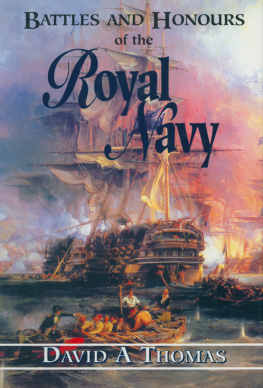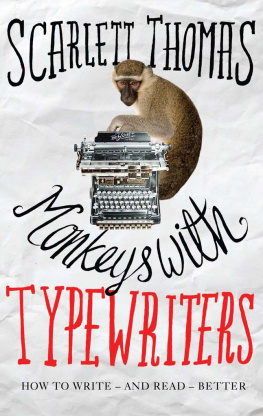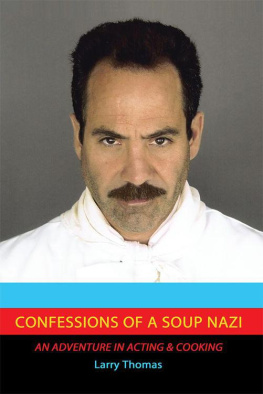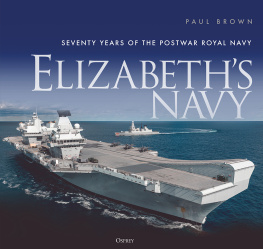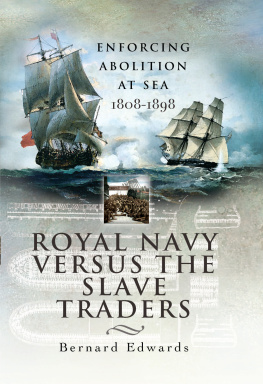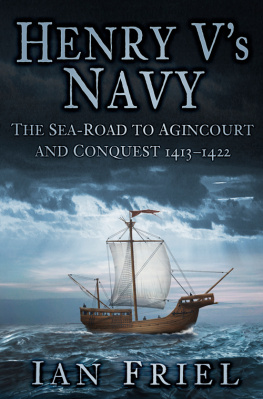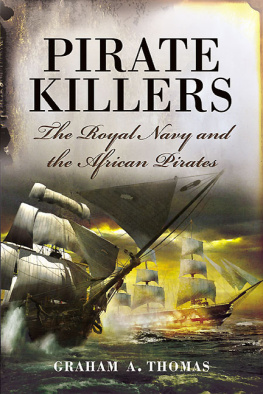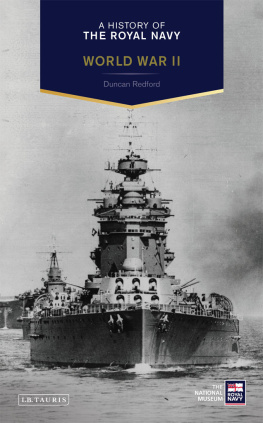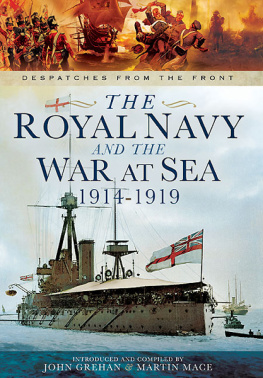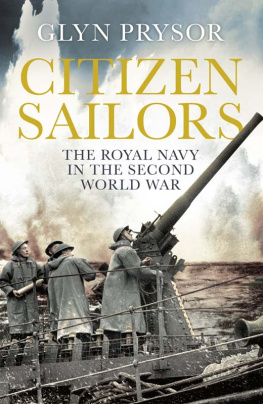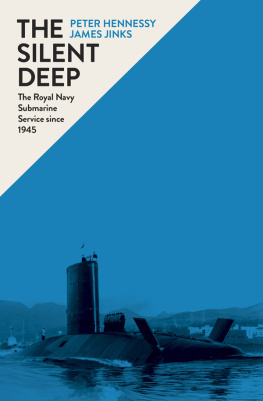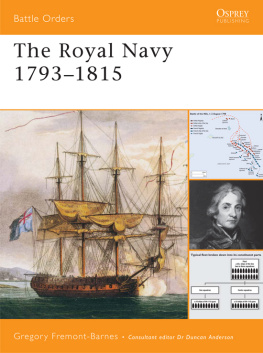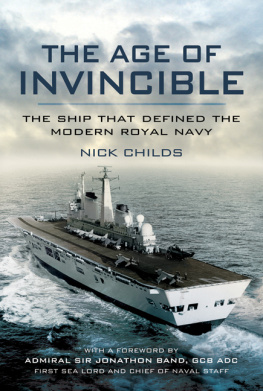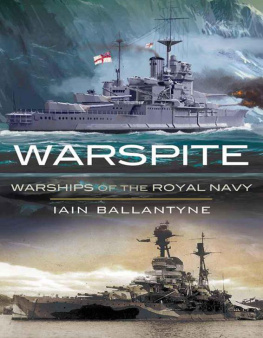Thomas - Battles and Honours of the Royal Navy
Here you can read online Thomas - Battles and Honours of the Royal Navy full text of the book (entire story) in english for free. Download pdf and epub, get meaning, cover and reviews about this ebook. City: Barnsley, England, year: 1998, publisher: Pen & Sword Paperbacks;Leo Cooper, genre: History. Description of the work, (preface) as well as reviews are available. Best literature library LitArk.com created for fans of good reading and offers a wide selection of genres:
Romance novel
Science fiction
Adventure
Detective
Science
History
Home and family
Prose
Art
Politics
Computer
Non-fiction
Religion
Business
Children
Humor
Choose a favorite category and find really read worthwhile books. Enjoy immersion in the world of imagination, feel the emotions of the characters or learn something new for yourself, make an fascinating discovery.
- Book:Battles and Honours of the Royal Navy
- Author:
- Publisher:Pen & Sword Paperbacks;Leo Cooper
- Genre:
- Year:1998
- City:Barnsley, England
- Rating:4 / 5
- Favourites:Add to favourites
- Your mark:
- 80
- 1
- 2
- 3
- 4
- 5
Battles and Honours of the Royal Navy: summary, description and annotation
We offer to read an annotation, description, summary or preface (depends on what the author of the book "Battles and Honours of the Royal Navy" wrote himself). If you haven't found the necessary information about the book — write in the comments, we will try to find it.
Battles and Honours of the Royal Navy — read online for free the complete book (whole text) full work
Below is the text of the book, divided by pages. System saving the place of the last page read, allows you to conveniently read the book "Battles and Honours of the Royal Navy" online for free, without having to search again every time where you left off. Put a bookmark, and you can go to the page where you finished reading at any time.
Font size:
Interval:
Bookmark:
BATTLES AND HONOURS
OF THE
ROYAL NAVY
DAVID A. THOMAS has also written:
Naval History
WITH ENSIGNS FLYING
SUBMARINE VICTORY
BATTLE OF THE JAVA SEA
CRETE 1941: THE BATTLE AT SEA
JAPANS WAR AT SEA: PEARL HARBOUR TO
THE CORAL SEA
ROYAL ADMIRALS
A COMPANION TO THE ROYAL NAVY
THE ILLUSTRATED ARMADA HANDBOOK
THE ATLANTIC STAR 19391945
CHRISTOPHER COLUMBUS: MASTER
OF THE ATLANTIC
QUEEN MARY AND THE CRUISER:
THE CURACOA DISASTER
(With Patrick Holmes)
Social History
THE CANNING STORY 17851985
CHURCHILL: THE MEMBER FOR WOODFORD
Bibliography
COMPTON MACKENZIE: A BIBLIOGRAPHY
(With Joyce Thomas)
Juvenile
HOW SHIPS ARE MADE
BATTLES AND HONOURS
OF THE
ROYAL NAVY
by
DAVID A. THOMAS


First published in Great Britain 1998 by
LEO COOPER
an imprint of
Pen & Sword Books Ltd
47 Church Street
Barnsley, S. Yorkshire S70 2AS
ISBN 085052 623 X
Copyright David A. Thomas 1998
A CIP record for this book is available from the British Library
Typeset in 10.5/13.5pt Sabon by
Phoenix Typesetting, Ilkley, West Yorkshire.
Printed in England by Redwood Books Ltd. Trowbridge, Wilts.
| Battle and Campaign Honours |
| Battles not awarded Honours |
| Single Ship and Boat Service Actions |
| Fleet Air Arm Squadron Honours |
Acknowledgements
It was 1660, the year of the restoration of King Charles II to the throne, which finds most support from claimants for the Navys founding year, if only because it was Charles who granted the Royal prefix in that year.
It may strike a discordant note to the purists, therefore, to read here about battles which pre-date this datum point of 1660, by as much as seventy-two years in the case of the Armada (1588). But the Armada, as the Admiralty Fleet Order puts it with inconsistency but good sense, and with studied understatement, is in all respects worthy of inclusion.
The Admiralty goes further, and this book is content to follow in its wake, by including Cadiz (1596), Kentish Knock (1652) and Santa Cruz (1657). We read of Drake, of Howard and of Frobisher, but none of these, neither the battles nor their commanders, represented a Navy that was Royal or even British simply English.
Much of the information presented here first appeared in A Companion to the Royal Navy, a comprehensive volume published by Harrap in 1988. The opportunity has been taken to thoroughly revise and up-date every entry relating to battles and honours of the Royal Navy.
Several other points call for comment in order to clarify what at first glance appear to be anomalies, omissions or difficulties.
The first difficulty to resolve is the definition of a battle when applied to the Royal Navy. Few would question the general guiding principle of including in such a compilation a battle fought at sea between a fleet or squadron and an enemy. This seems perfectly sensible and acceptable at first sight, but if this definition is observed strictly it eliminates landing assaults such as combined operations, single or very-few-ship actions, evacuations and air-sea engagements, and patently this is not good enough. How then can this problem be resolved?
I confess to some inconsistency here and make no excuses for introducing into this collection of battles a category which the Admiralty disallows, namely battles which have not been awarded an honour. For example, no compilation such as this could excuse omitting the clash of Force Z and squadrons of Japanese aircraft in the South China Sea when the battleship HMS Prince of Wales and the battlecruiser HMS Repulse were sunk in December, 1941, simply because no enemy ships were engaged.
The engagement was a benchmark in naval history: two capital ships, apparently efficiently worked up, adequately armed, with plenty of sea room, with well-trained crews and good visibility, succumbed to the assault.
The operation a year earlier by aircraft squadrons of the Fleet Air Arm on the Italian battle fleet at Taranto was against capital ships secured safely but slumbrous in a well-defended port.
The Force Z clash is not considered worthy of the Admiralty award of a battle honour, while, by contrast, the successful Fleet Air Arm attack at Taranto is justly recognized by an honour. Both engagements are included.
For equally compelling reasons no true list of battles can exclude a paragraph or two on the evacuations from Dunkirk (1940) and Crete (1941), although the principal enemy forces were German aircraft.
Other examples of such anomalies occur quite frequently and when the Admiralty battle honours list is challenged other difficulties loom. Some explanations are still wanting where the Admiralty record itself shows some inconsistencies, such as Atlantic Conveyor in the Falklands in 1982; and 899 Squadron of the Fleet Air Arm probably ought not to have Aegean 1943; and 801 Squadron surely deserves a North Africa honour. However, these anomalies have been allowed to stand until formally corrected.
Convoy battles across the Atlantic, through the Mediterranean and to and from Russia call for special comment. The Battle of the Atlantic (19391945) deserves a full and detailed classification in its own right. Winston Churchill described the battle as a war of groping and drowning, of ambuscade and stratagem, of science and seamanship. On another occasion he wrote: The only thing that really frightened me during the war was the U-boat peril.
It is evident that this is not the place for the full classification: hundreds of convoys were escorted and operated during the Second World War, with many scores of them resulting in significant engagements on a scale transcending by far many of the honour-worthy battles of the past. Yet these individual convoy battles go unrecognized; they are simply classified by the all-embracing honour Malta Convoys 19412, or Arctic 19415, or Atlantic 193945.
As a compromise, to give a fairer balance to the entries and to bring home the anguish, violence and horror of these clashes a few convoy battles from the Malta, Russian and Atlantic battle fronts have been selected for inclusion.
Other problems arise. British submarine activity is only honoured by campaign awards and this seems to me inadequate recognition when some patrols equated to battles. To redress the balance, partially at least, I have described two patrols one from each World War. For WWI I have chosen Commander Martin Nasmiths exciting and extraordinary foray into the Sea of Marmara in HM Submarine E 11 (May June, 1915) and for WWII (May, 1941) Lieutenant-Commander David Wanklyns gallant exploits in Upholder in the Mediterranean.
Other limitations imposed by the Admiralty result in the exclusion of some single-ship actions, yet these were the dominant feature of the Naval War of 1812 against America. So one such battle has been selected for inclusion here the celebrated Chesapeake v Shannon. Purists may cavil at the biased choice of this engagement, the first British success after a series of five incredible American single-ship successes. It earns inclusion because it has just about all the qualities needed in fighting at sea during the days of sail.
* * *
The document which helps set out the criteria and lists the awards of battle honours is Admiralty Fleet Order (AFO) 2565/54 Issue 98/54 dated 1 October, 1954, and it is entitled
Next pageFont size:
Interval:
Bookmark:
Similar books «Battles and Honours of the Royal Navy»
Look at similar books to Battles and Honours of the Royal Navy. We have selected literature similar in name and meaning in the hope of providing readers with more options to find new, interesting, not yet read works.
Discussion, reviews of the book Battles and Honours of the Royal Navy and just readers' own opinions. Leave your comments, write what you think about the work, its meaning or the main characters. Specify what exactly you liked and what you didn't like, and why you think so.

